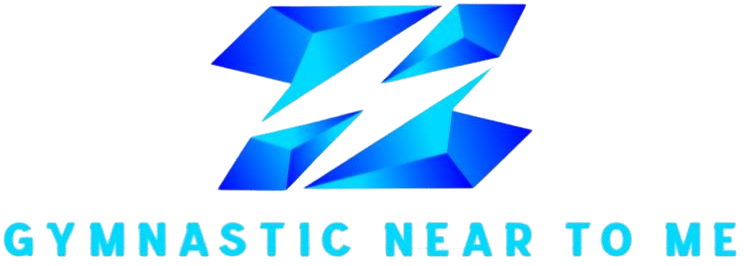It starts with a cartwheel on the lawn, a handstand against the living room wall, or the thrill of a trampoline bounce. For many children, gymnastics is the first sport that introduces them to body control, confidence, and fun. But a question often asked by parents is: when’s the best time to start?
The short answer? The earlier, the better—if the environment is supportive and developmentally appropriate.
This article explores why gymnastics for kids is a powerful foundation for physical and mental growth, what age groups benefit most, and how structured programs like those at YMCA Leisure City help kids thrive.
Why Gymnastics Is Ideal for Young Children
Gymnastics develops more than just athletic ability. It nurtures strength, balance, focus, discipline, and resilience—all wrapped in movement and play.
Children who take part in gymnastics often see improvements in:
- Motor skills and coordination
- Posture and body awareness
- Confidence and emotional regulation
- Social interaction and listening skills
Because gymnastics incorporates rolling, jumping, swinging, balancing and sequencing, it builds a wide range of abilities that transfer to almost every other sport—and to life.
What’s the Best Age to Start?
There’s no single “perfect” age, but many programs begin introducing kids to gymnastics as young as 18 months through parent-assisted classes. These focus on safe exploration, sensory development, and bonding through movement.
1.5 – 3 years: Toddler Play & Movement
- Focus on play-based movement, crawling, climbing, and jumping
- Helps build confidence, strength, and early balance
- Encourages social connection through songs and games
4 – 5 years: Pre-School Gymnastics
- Introduces structured class environments
- Teaches basic positions (tuck, pike, straddle), forward rolls, balance beam walks
- Builds listening skills and independence
6 – 8 years: Foundational Gymnastics
- More skill progression: cartwheels, bridges, handstands
- Focus on control, consistency, and correct technique
- Ideal age for joining entry-level recreational programs
9+ years: Skill Development and Specialisation
- Refinement of technique and strength
- May transition into competitive or performance-based streams
- Also great for beginners—older kids can start fresh with age-appropriate progressions
The best time to start gymnastics for kids is when they’re eager to move and explore in a safe, structured environment—regardless of whether that’s at age 3 or 10.
Story from the Mat: The “Shy Kid” Breakthrough
Liam was six years old when he first joined a recreational gymnastics class. Quiet, nervous, and reluctant to join group activities, he spent the first few sessions staying close to the coach.
Week by week, things changed. He learned to hold a front support on the bar. He nailed his first forward roll. He started cheering for others.
By term’s end, he was leading warm-ups, suggesting games, and had made three new friends. Gymnastics didn’t just build his coordination—it gave him a voice.
This is why gymnastics for kids matters. It’s movement with meaning.
What Makes a Good Kids’ Gymnastics Program?
Not all gymnastics programs are equal. A quality facility and coaching team will offer:
- Age-appropriate equipment (low beams, soft mats, supportive bars)
- Small class sizes with experienced instructors
- Progress tracking and feedback
- A balance of fun, challenge, and structure
- Inclusion for kids of all abilities and backgrounds
The best programs focus on fundamentals first—like safety rolls, landings, and balance—before introducing more advanced skills. This gives children a strong, safe base to build from.
More Than Just Movement
Gymnastics supports more than physical fitness. It encourages goal setting, persistence, and self-belief.
Kids learn that progress comes from repetition and effort. That falling isn’t failure—it’s part of the process. These lessons carry over to school, friendships, and beyond.
Plus, gymnastics helps kids burn energy, improve sleep, and regulate emotions. After an hour of jumps, rolls and climbs, many parents notice calmer evenings and better routines at home.
Where Does Indoor Sport Fit In?
At YMCA Leisure City, movement doesn’t stop at gymnastics. The centre also offers community programs like tape ball indoor cricket—a fast-paced, social sport ideal for older kids and adults. It’s a great next step for kids who’ve built agility and coordination through gymnastics and want to explore new sports.
Developing a love of movement early makes it easier for kids to transition into a variety of sports later on. That’s why gymnastics is such a great base—it teaches the body and brain how to move efficiently and confidently, whatever the activity.
What the Experts Say
According to Gymnastics Australia, gymnastics is a key foundation sport that supports early physical literacy. Their “LaunchPad” initiative promotes participation for kids aged 0–12 with a focus on fun, safe skill development and lifelong engagement in sport.
The recommendation is clear: start young, keep it fun, and create positive experiences with movement from the beginning.
Final Word: It’s Never Too Early—or Too Late
Whether your child is flipping on the couch cushions or taking cautious steps on a balance beam, gymnastics offers benefits for all ages and abilities.
The best age to start is the one that matches your child’s curiosity, confidence, and readiness to move. From toddler tumbling to school-aged skill-building, gymnastics for kids opens doors—not just to better movement, but to growth in every direction.
If you’re ready to introduce your child to an active, supportive community that celebrates every little win, start with gymnastics—and see where their movement takes them.

